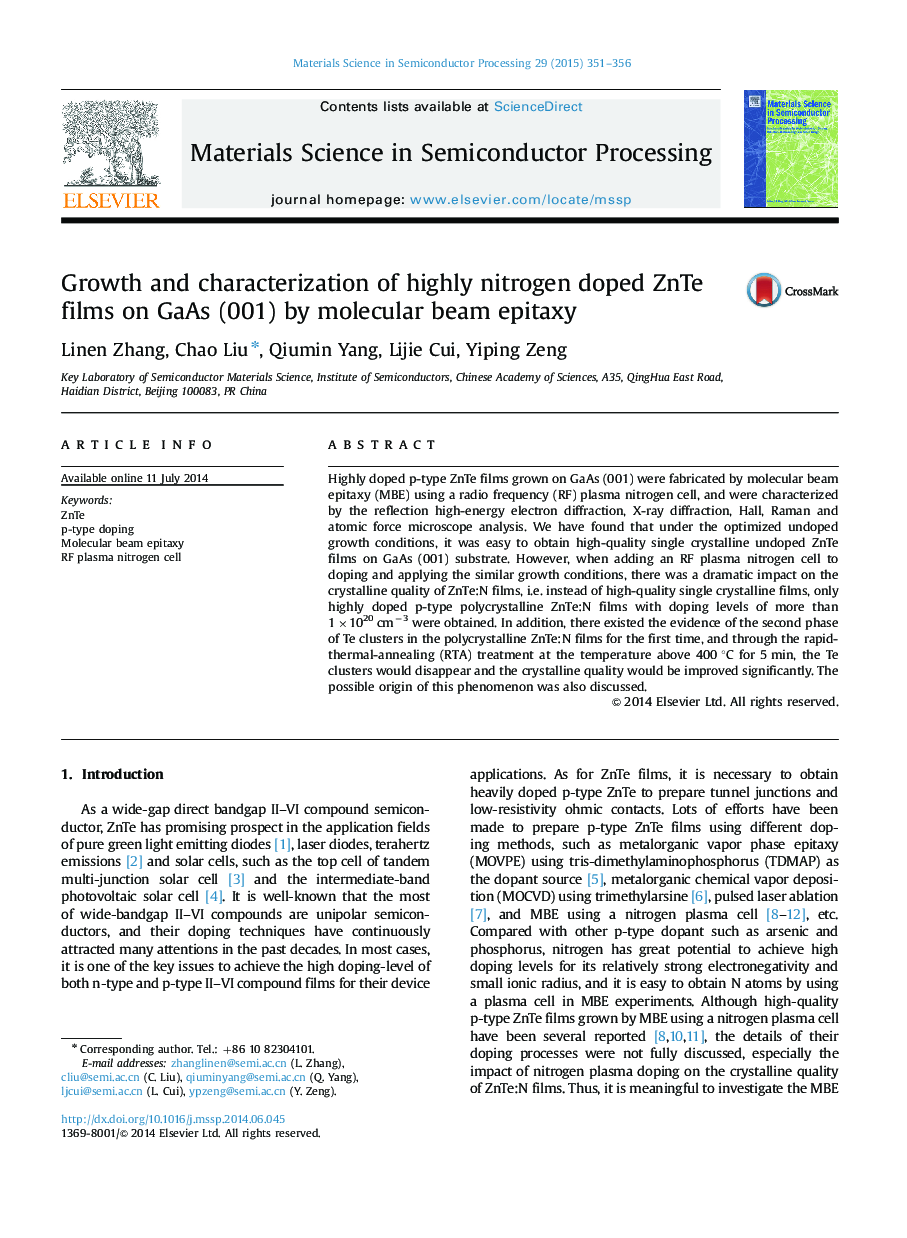| Article ID | Journal | Published Year | Pages | File Type |
|---|---|---|---|---|
| 729322 | Materials Science in Semiconductor Processing | 2015 | 6 Pages |
Highly doped p-type ZnTe films grown on GaAs (001) were fabricated by molecular beam epitaxy (MBE) using a radio frequency (RF) plasma nitrogen cell, and were characterized by the reflection high-energy electron diffraction, X-ray diffraction, Hall, Raman and atomic force microscope analysis. We have found that under the optimized undoped growth conditions, it was easy to obtain high-quality single crystalline undoped ZnTe films on GaAs (001) substrate. However, when adding an RF plasma nitrogen cell to doping and applying the similar growth conditions, there was a dramatic impact on the crystalline quality of ZnTe:N films, i.e. instead of high-quality single crystalline films, only highly doped p-type polycrystalline ZnTe:N films with doping levels of more than 1×1020 cm−3 were obtained. In addition, there existed the evidence of the second phase of Te clusters in the polycrystalline ZnTe:N films for the first time, and through the rapid-thermal-annealing (RTA) treatment at the temperature above 400 °C for 5 min, the Te clusters would disappear and the crystalline quality would be improved significantly. The possible origin of this phenomenon was also discussed.
